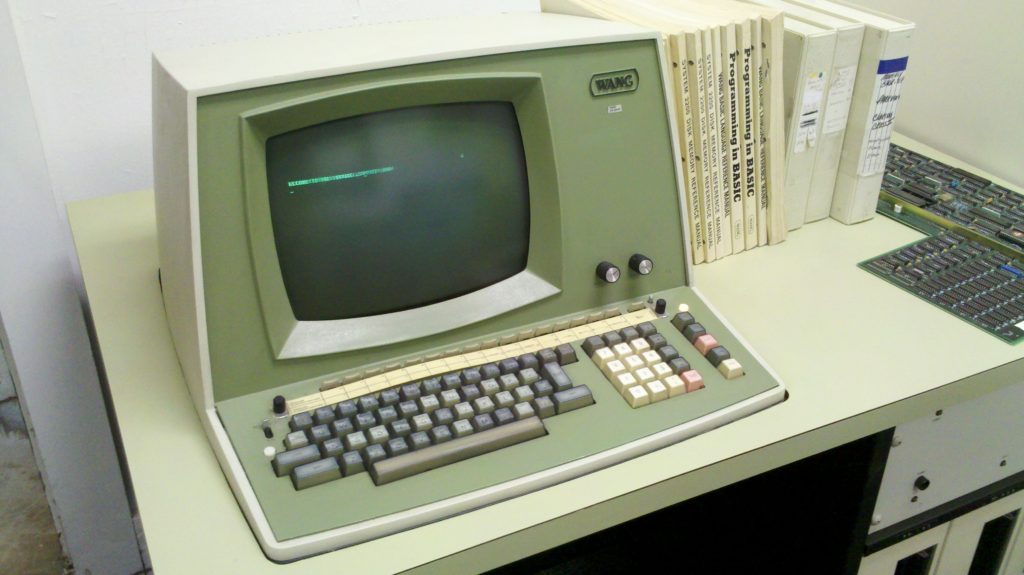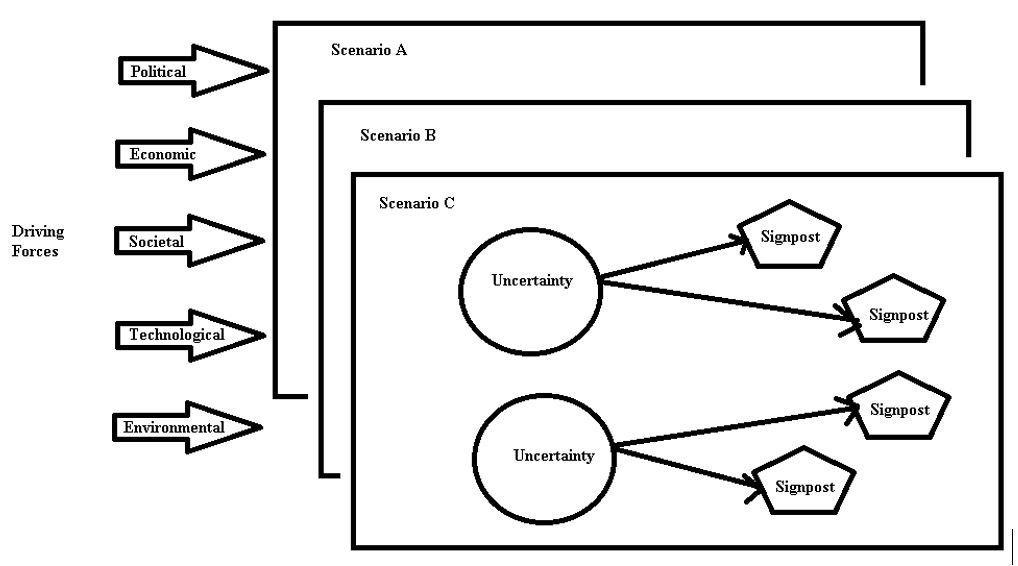Today, I will discuss how the failure to leverage strategic scenario planning led to the rapid decline of Wang Laboratories during the 1990s. At one point in the 1980s, more than 80 percent of the 2,000 largest United States companies used Wang systems [1]. In 1984, Wang realized over $200 million in profits on sales of $2.2 billion. Wang was soaring! The competition could not keep Wang down. However, Wang quickly became a footnote in the computer technology history as Wang failed to recognize and proactively plan for the disruptions in the computer marketplace. Wang could no longer rise to the occasion (insert your own Wang joke here).
In the 1970s, the minicomputer industry grew rapidly. The small, powerful minicomputers quickly began replacing the room-sized mainframes from the previous era. Wang was among the leaders and innovators in the minicomputer industry. One of Wang’s biggest successes was in office automation with Wang’s word processing suite [2]. The use of word processing terminals connected to a proprietary Wang minicomputer helped usher in office automation [1]. Wang systems began replacing typewriters in offices throughout the country. Wang, riding a wave of success, set sites on the giant in the industry, IBM [3].

However, Wang did not anticipate the disruptive forces on the horizon. The microcomputer, powered by the microchip, was about to make the proprietary minicomputers from companies such as Wang obsolete [2]. At the onset of the microcomputer industry, Wang made two critical decisions based on prior successes [1]. Wang decided to concentrate on hardware and chose to focus on minicomputers and word processors. From a traditional forecasting perspective, these decisions made sense. Wang was hugely successful at the time as Wang word processing systems were ubiquitous among corporate offices. However, these decisions led to the demise of Wang Laboratories.
Wang was flush with the success of the company’s office automation solutions and disregarded what was happening in the industry [2]. The microcomputer market began to take shape in the 1980s. However, Wang continued to pursue a strategy based on the doomed minicomputer technology. Wang focused on further office automation solutions leveraging minicomputer technology, including digital image processing. I remember writing software drivers to interface with the Wang imaging systems when I worked for a small startup in the late 1980s. At the same time, I was writing similar interfaces to the digital imaging and voice systems of another prominent player in the microcomputer industry, DEC.
In addition to the introduction of microcomputers, the technology industry also began a movement toward interconnectedness [2]. Wang stubbornly resisted the open systems trend, as well. The proprietary nature of the Wang operating system prevented customers from easily connecting Wang systems to other systems. Which is why people like me had to write low-level drivers to interface with Wang systems. When Wang finally introduced a personal computer (PC), the company chose not to make the Wang PC compatible with the IBM PC. Fortunately, I never had to work with the Wang PC.
The demise of the once great company came quickly for Wang. An Wang, the founder of Wang Laboratories, retired in 1986 passing the company presidency to his son, Fred Wang [1]. The elder Wang, an immigrant from Shanghai, started the company with $500,000 he received from the sale of a patent for magnetic core memory to IBM [3]. By the time An Wang headed into retirement, the pioneering company was already in decline. An Wang died in 1990, and two years later, the company he so proudly built to compete with IBM filed for bankruptcy [1].
Companies should consider using scenario planning to avoid making the same mistakes as Wang. The use of scenario planning forces people to consider alternative futures instead of extrapolating based on past performance [4]. When creating scenarios, participants discuss the driving forces and identify the critical uncertainties within the scenario. By understanding the possible scenarios, and the critical uncertainties within each scenario, the team can identify signposts. The signposts act as early indicators that the scenario is playing out. Early identification of the signposts and planning the possible responses will better prepare a company to respond quickly to disruptive changes.

Scenario planning differs significantly from traditional forecasting. Forecasting aims to predict future outcomes based on projections [4]. Often, the projections used in traditional forecasting are extrapolations based on past considerations. Based on traditional forecasting, Wang’s future looked great. Using traditional forecasting for strategic planning does not effectively consider the possible forces of change in the future. Instead, traditional forecasting implicitly considers that other than the variables used to create the forecast, everything else remains static.
Scenario planning considers the possible challenges a company might face in the future and develops multiple alternative futures [4]. In developing scenarios, companies must consider the driving forces of change, including political, economic, societal, environmental, and technological forces. Each of the futures, or scenarios, is possible, but none is necessarily likely. By understanding the multiple possible scenarios, a company can better develop flexible strategies that will allow the company to succeed in the face of uncertainty and disruption.
About the author: Donnie Wendt is an information security professional focused on designing and engineering security controls and monitoring solutions. Also, Donnie is an adjunct professor of cybersecurity at Utica College. Donnie is currently pursuing a Doctorate of Science in Computer Science with a research focus on security automation and orchestration.
References
[1] Brewster, M. (2004). An Wang: The core of the computer era. Bloomberg. Retrieved from https://www.bloomberg.com/news/articles/2004-07-13/an-wang-the-core-of-the-computer-era
[2] Ziegler, B. (1992). Once-booming Wang Laboratories failed to heed the changing market. Seattle Times. Retrieved from http://community.seattletimes.nwsource.com/archive/?date=19920823&slug=1508984
[3] Smith, E. (2017). We’re gunning For IBM. Tedium. Retrieved from http://tedium.co/2017/02/14/wang-computers-history-demise/
[4] Wade, W. (2012). Scenario planning: A field guide to the future. Hoboken, NJ: John Wiley & Sons, Inc.